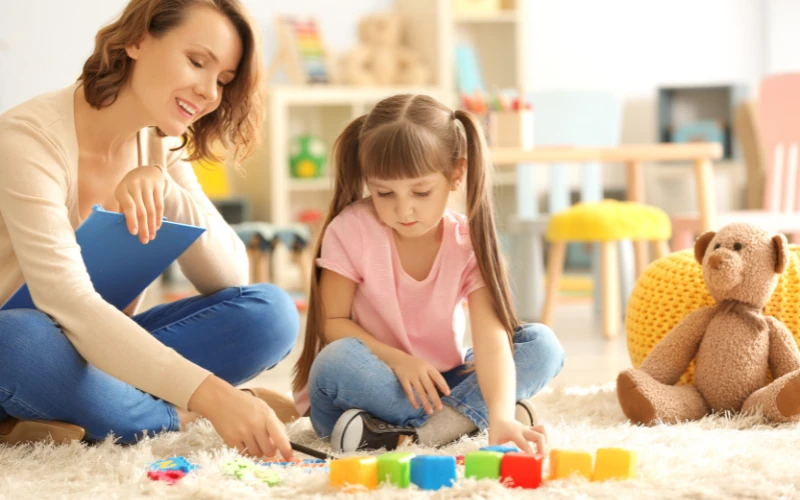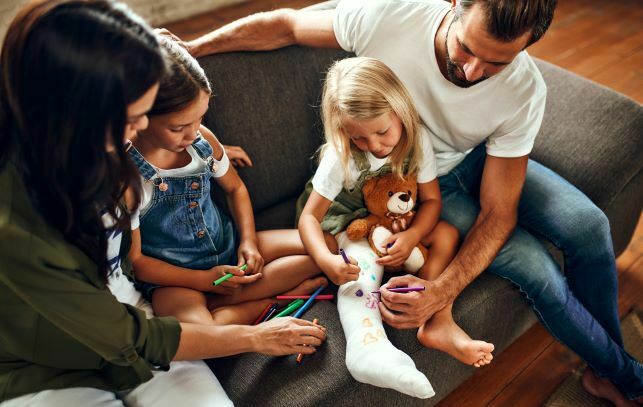Trauma, an emotional response to a distressing event that jeopardizes physical or psychological well-being, can deeply impact children. However, with patience and steadfast support, children have the capacity to heal and overcome the effects of trauma.
Surprisingly prevalent, childhood trauma affects a significant portion of the population, with statistics indicating that more than one in six adults report experiencing at least one traumatic event during childhood, while approximately six out of ten report four or more such experiences.
In this comprehensive guide to remote patient monitoring, we explore effective strategies to aid your child’s healing journey from childhood trauma.
1. Share the information about the traumatic event.
It is best for kids to get information about a traumatic event from a responsible adult like their parents. Allow kids to ask questions and keep your answers succinct and honest. Don’t assume that children worry about the same issues that adults do.
2. Avoid blaming.
Finding the cause of your child’s trauma can occasionally be complicated. To prevent your youngster from feeling guilty, suppress any negative feelings or behaviors you may have. Even if the experience was beyond their control, children might blame themselves for it. Inform them that they are not to blame or liable.
3. Make your child feel safe and secure.
From infants to teenagers, all kids will benefit from your touch as a parent, whether it is extra cuddling, hugs, or just a comforting pat on the back. It gives them a sense of security, which is crucial following a frightening or upsetting event.
4. Promote self-esteem.
Positive experiences can help your child feel better about themselves and promote independence, progress, and a sense of belonging. Children who learn to complete tasks independently feel better about themselves.
5. Listen.
If your child wants to talk, be there to listen. If they’re not ready, don’t press the issue. During discussions of challenging subjects or conversations, reassure them and accept their feelings.
6. Follow a routine.
Establish a regular schedule at home and school. Try to maintain consistent bedtimes and mealtimes. Routines reassure kids that life will get back to normal even in the midst of chaos and change.
7. Be persistent.
Some kids recover more quickly from other children’s trauma. Recovery from childhood trauma is not always smooth; there may be many peaks and valleys along the road. Avoid pushing your child. Give them your time and a lot of love and comfort.
8. Look for hints.
Children may find it challenging to articulate their thoughts. After a traumatic experience, watch for behavioral changes. These could be signs that your youngster is struggling. Some frequent alterations to look out for include:
- More or less food than usual.
- Having problems or needing more sleep than average.
- Regression (such as a potty-trained preschooler having accidents again or a toddler who slept through the night now waking frequently).
- Grumpiness and irritability.
- Concern over being separated from others, especially in younger children.
9. Deal with the situation calmly.
Children seek comfort from adults after experiencing traumatic events. Children are quick to pick up on anxiety, so avoid discussing your worries with them or around them, and be mindful of the tone of your voice.
10. Ask a mental health professional for assistance.
Seek the advice of trained behavioral health or mental health professional. When necessary, they can aid in the transition from trauma to healing by helping kids and families deal with the effects of upsetting incidents and circumstances. Ask your healthcare provider about Remote Patient Monitoring if your child is eligible.
11. Provide opportunities for expression through art or play therapy.
Encouraging your child to engage in art or play therapy can significantly aid in their healing journey from childhood trauma. These therapeutic modalities provide a non-verbal avenue for children to express their feelings and experiences, facilitating emotional processing and release within a safe and supportive environment. Here’s how art and play therapy can benefit your child:
- Encourages expression: Children may find it challenging to verbalize their emotions and experiences, but through art or play, they can express themselves more freely and creatively.
- Facilitates communication: Art and play serve as powerful mediums for communication, allowing children to convey complex emotions and experiences that they may struggle to articulate verbally.
- Promotes self-awareness: Engaging in artistic or playful activities encourages children to explore their inner world, helping them develop a deeper understanding of their thoughts, feelings, and behaviors.
- Enhances coping skills: Art and play therapy provide children with constructive ways to cope with stress, anxiety, and trauma. Through creative expression, they learn healthy coping mechanisms and develop resilience.
- Fosters a sense of control: Traumatic experiences can leave children feeling powerless and overwhelmed. Art and play therapy empower them by offering a sense of control over their creative process, promoting feelings of autonomy and empowerment.
- Builds trust and rapport: Participating in art or play therapy sessions fosters a strong therapeutic alliance between the child and the therapist. This trusting relationship provides a supportive foundation for healing and growth.
- Encourages problem-solving: Engaging in artistic or playful activities encourages children to explore different perspectives and solutions, fostering critical thinking and problem-solving skills.
- Promotes emotional regulation: Art and play therapy help children learn to identify and regulate their emotions effectively. By expressing and processing their feelings through creative outlets, they develop healthier emotional regulation strategies.
- Supports social interaction: Group art or play therapy sessions provide opportunities for children to interact with peers in a supportive and non-judgmental environment, fostering social skills and peer relationships.
- Encourages resilience: Engaging in creative expression through art or play therapy can help children develop resilience in the face of adversity. By expressing their emotions and exploring their experiences, they build the inner strength to overcome challenges and thrive.

Frequently Asked Questions
Is it normal for my child to show resistance to therapy or counseling?
Yes, resistance to therapy can be normal, especially if your child feels overwhelmed or unsure. Building trust with the therapist and providing a safe space for expression can help address resistance over time.
How can I know if my child is making progress in their healing journey?
Signs of progress may include improved emotional regulation, better communication, enhanced coping skills, and increased self-esteem. Regular communication with the therapist and observing positive changes in behavior can also indicate progress.
Should I discuss the traumatic event with my child, or is it better to avoid the topic?
Approach discussions with sensitivity, considering your child’s readiness. Open communication can help them process their feelings. Seek guidance from a mental health professional on how to approach the topic appropriately.
How can I support my child if they experience flashbacks or nightmares related to their trauma?
Offer comfort and reassurance, reminding them they’re safe. Encourage grounding techniques like deep breathing. Consult a therapist for additional strategies tailored to your child’s needs.
What can I do if my child’s symptoms worsen despite our efforts to help them heal?
Seek additional support from a mental health professional. They can assess, adjust treatment strategies, and provide specialized interventions. Healing from trauma takes time, and professional guidance can help navigate challenges.
Takeaways
Caregiving for a child who has endured trauma may leave you feeling paralyzed by all the potential consequences. It’s important to stress that those outcomes aren’t set in stone. You can act as a parent or caregiver to lower your child’s hazards.
Don’t let the fear of potential consequences paralyze you when caring for a child who has experienced trauma. While it’s natural to worry about the outcomes, it’s crucial to understand that these aren’t predetermined. As a parent or caregiver, you have the power to make a difference in lowering your child’s risks.
Take action today to provide the love, support, and resources they need to heal and thrive. Together, we can create a brighter future for our children. Contact us now!
Disclaimer: The information in this article is for general informational purposes only. It is not a substitute for professional psychological advice or treatment. Consult with a qualified mental health professional for personalized guidance.








